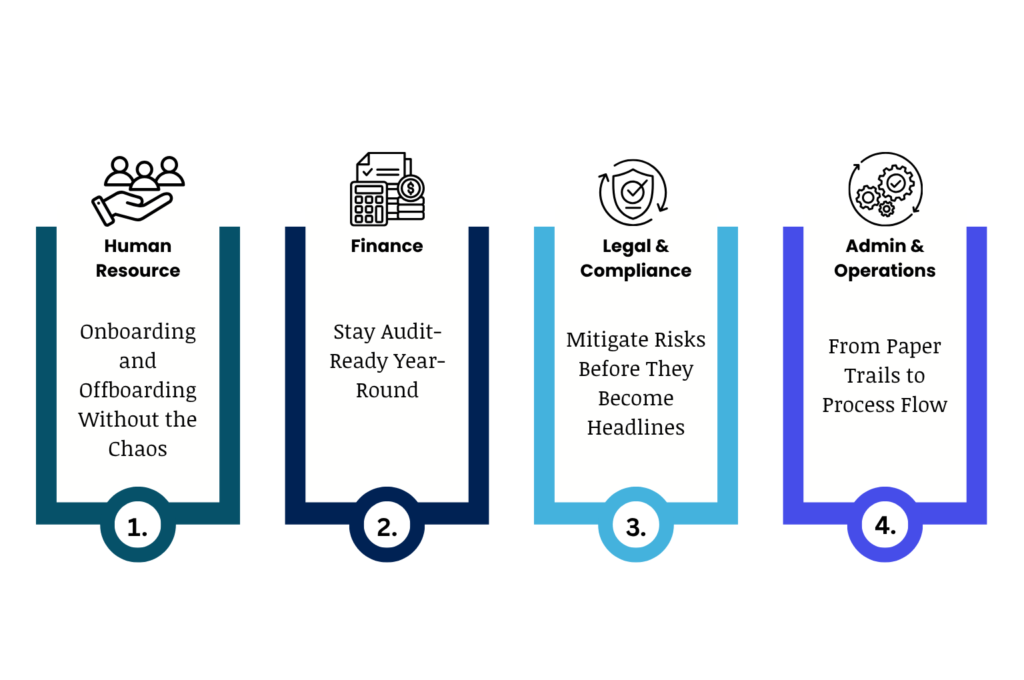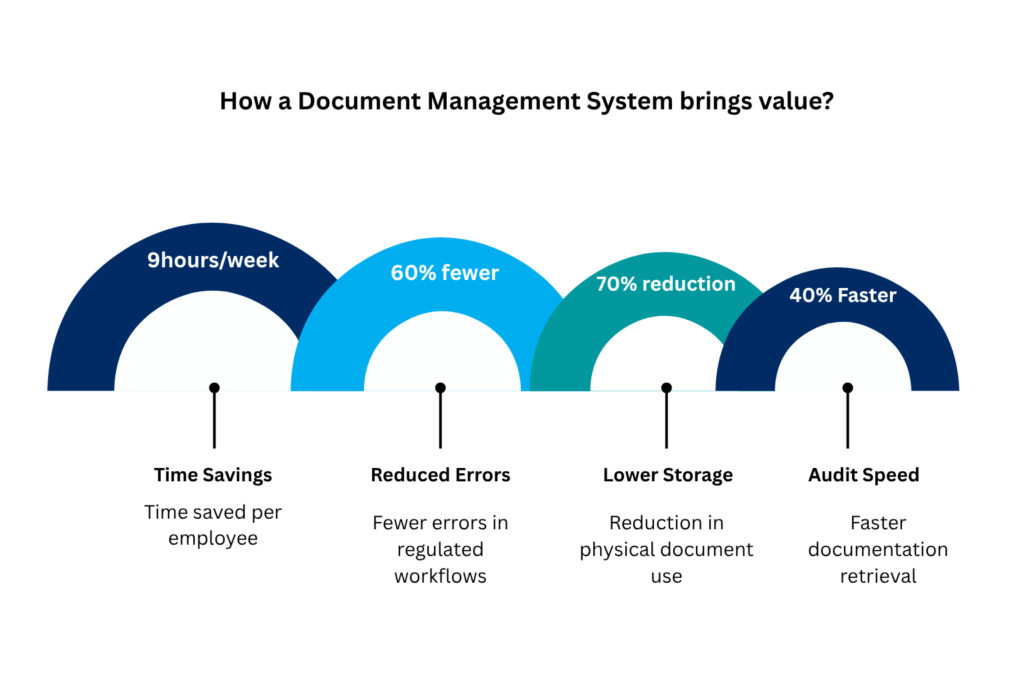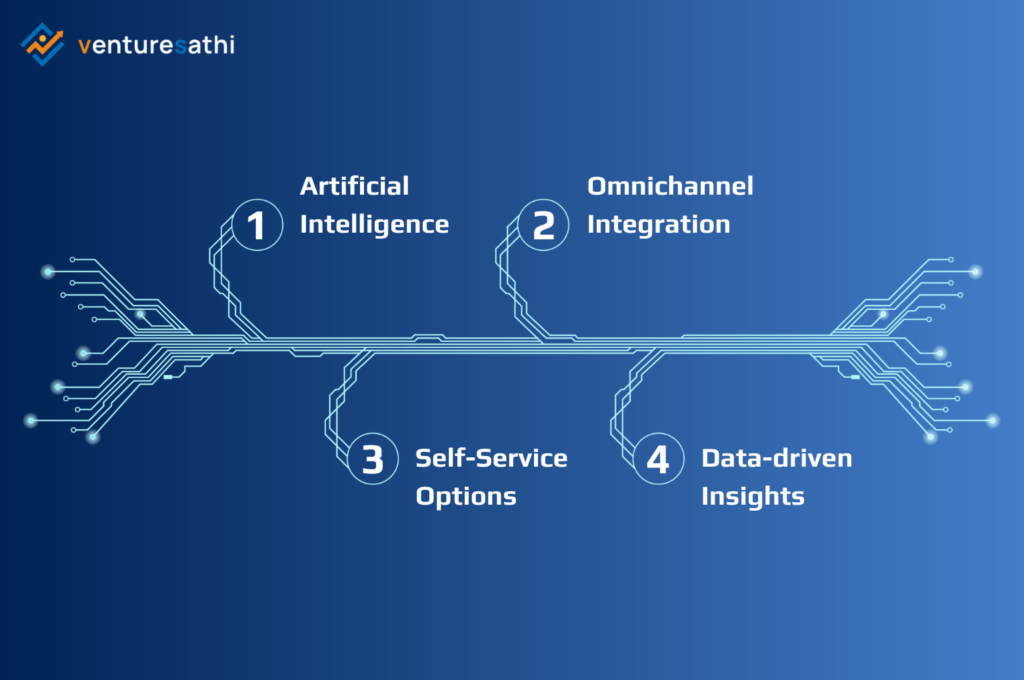
Every business generates documents that’s not new. What is new is the pace and volume of content flowing through modern organizations today. From contracts and invoices to compliance reports, HR records, and internal SOPs data is doubling faster than most teams can manage it.
And yet, across departments, a common struggle remains:
“I can’t find the latest version.”
“Who approved this?”
“Didn’t we already sign that?”
“This was supposed to be confidential!”
These aren’t just minor inefficiencies they’re symptoms of operational drag, and they become business risks when ignored. According to IDC, knowledge workers spend 30% of their day searching for information. That’s nearly 12 hours a week lost to chasing files.
In 2025 and beyond, businesses can’t afford to treat document management as an afterthought. It’s no longer a “back-office issue” t’s a front-line necessity, essential to how your teams collaborate, how your customers are served, and how your risks are managed.
What Is a DMS? (And Why Basic Cloud Storage Isn’t Enough)
A Document Management System is not just a digital cabinet. It’s a structured platform that helps you:
- Store documents securely in one centralized place
- Tag them with metadata for fast, intelligent search
- Control who sees what and who can edit it
- Automate approvals, reviews, and compliance workflows
- Track every version, change, and comment
- Prepare effortlessly for audits or handovers
While cloud drives serve basic storage needs, they often fall short when your business begins to scale or deal with compliance-heavy workflows. A dedicated DMS goes beyond convenience it ensures that documents are not just stored but governed, traceable, and always audit-ready. Whether you’re onboarding employees, managing vendor contracts, or documenting processes, a true DMS brings the structure and accountability that basic cloud tools simply can’t offer. Unlike general-purpose tools like Google Drive or OneDrive, a true DMS is built for enterprise-grade collaboration, governance, and scalability

The Real Impact: How DMS Transforms Key Departments
Rather than making the blog too feature-heavy, let’s ground it in real organizational contexts:
- HR: Onboarding and Offboarding Without the Chaos
Hiring fast? Scaling remote teams? HR teams juggle offers letters, IDs, NDAs, policy sign- offs, appraisals, and exit forms daily.
A smart DMS:
- Automatically creates secure employee folders
- Sends expiry alerts for probationary contracts
- Tracks version changes in policy documents
- Ensures only authorized access to sensitive records
According to Deloitte, digital HR documentation can reduce admin effort by 45%.
- Finance: Stay Audit-Ready Year-Round
Finance teams manage bills, invoices, vendor agreements, statutory reports, and internal budgets
With a DMS:
- Tag invoices by vendor, amount, or due date
- Keep multi-version PO documents structured
- Retrieve tax filings in seconds during audit season
- Restrict edit/download access for confidential docs
PwC reports DMS-driven automation can cut audit prep time by 40%.
- Legal & Compliance: Mitigate Risks Before They Become Headlines
The legal department needs to monitor contract expiries, policy updates, and compliance documents all with a clean audit trail. A DMS:
- Maintains version histories with timestamps
- Logs every user action for accountability
- Flags documents nearing renewal or expiry
- Helps demonstrate compliance in audits or disputes
- Admin & Operations: From Paper Trails to Process Flow
Whether it’s procurement records, visitor logs, or SOPs, operations teams depend on timely, traceable documents. A DMS enables:
- Central access to forms and templates
- Approval workflows with role-based routing
- Digital acknowledgement of updates (e.g., policy read receipts)
- Reduced reliance on physical files
DMS as the Connective Layer Between HRMS, ERP, and KMS
Your Document Management System shouldn’t sit on the sidelines it should work alongside your existing tools to enhance how work gets done. When integrated with platforms like HRMS, ERP, and KMS, a DMS becomes more than storage it becomes a workflow accelerator. Here’s how it strengthens each core system:
- HRMS + DMS
- Automatically links offer letters, appraisal records, and ID documents to employee profiles.
- Ensures sensitive HR files are securely stored with access only to authorized personnel.
- Streamlines onboarding and exit processes with document checklists and status tracking.
- ERP + DMS
- Organizes and version-controls vendor contracts, purchase orders, and tax documents.
- Supports procurement workflows by ensuring every file is tied to transactions or vendors.
- Makes audits smoother with searchable, tagged, and timestamped records.
- KMS + DMS
- Centralizes SOPs, training documents, and compliance manuals in one source of truth
- Tracks updates and reader acknowledgment for policy documents
- Reduces duplication by maintaining a single version of critical knowledge assets
In short, a DMS doesn’t just hold files it connects systems, supports compliance, and ensures the right documents are available where and when they’re needed

Conclusion: Build Smarter, Not Slower
Document management might not sound like the most urgent priority until a contract goes missing, an audit catches you off guard, or a team loses hours chasing the “final” version of a file. In today’s fast-moving business landscape, how you manage your documents reflects how you manage your operations. A robust Document Management System (DMS) brings more than order; it brings speed, security, and structure to the way your teams work. It helps eliminate friction, enhances compliance, and gives every department the clarity it needs to operate at its best. If your workflows still depend on scattered drives, emails, or manual processes, it’s time to rethink. Because a business that’s growing can’t afford to be slowed down by its own information


